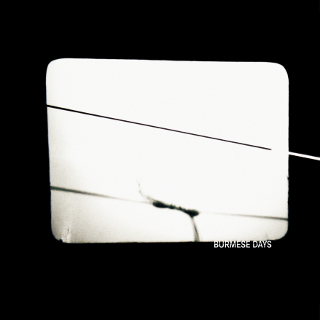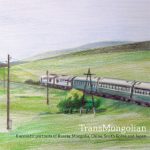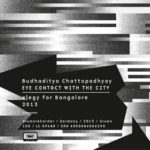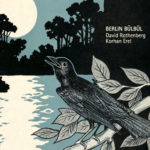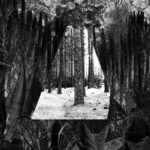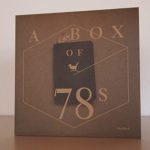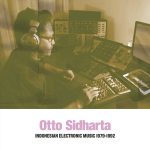Burmese Days
18,00 € VAT Included
In stock
“Over the past several years, Vienna-based composer / producer Peter Kutin has been working intensely at the little-explored junction between sound art and journalism / documentation. Focusing on sonic experiences in extreme or exceptional conditions. Kutin explores both the physical and psychological impacts of such extremes on how we hear. Later translating or orchestrating these experiences into sound. Despite his age, Kutin has already seen (and heard) many lost corners of the world, having realised field-projects that led him through deserts, jungles, mountain ranges, glacier gaps, war zones, volcanoes, protest marches and even into prison.
‘Burmese days’ is not the traditional purist field-recording album but more an abstract composition, which opens up a wide dynamic range of sonic perception, where electronic manipulations and timbres of selected traditional Burmese instruments are interwoven with field recordings to form a captivating sonic essay – probably one of the most abstract and unexpected releases on Gruenrekorder.
Peter Kutin:
‘The following piece is mainly based on original field recordings from Myanmar taken between April & May 2012, half a year after the military dictatorship announced its withdrawal and indicated plans for a change towards a democratic – or a ‘hybrid military-civilian’ – system in Myanmar after more than sixty years of a military state and its repression. Suddenly it was legal for journalists to enter officially. When I found a timeslot and got the money and some contacts together, I set up a field trip following a journalistic and documentary approach. One of my main interests was to investigate whether the situation of people of ethnic minorities had already changed since the regime’s withdrawal. There were peace talks, but in fact most of the rebel groups were still at war with the military regime at that time. My route started at the border area between Myanmar and Thailand: topographically, this was a zone covered by a beautiful rainforest and all its richness of sounds; politically, it was a buffer zone : ethnic minorities, rebel groups, expelled people, opium and other drug smugglers and refugee camps.
At the end of 2012, US president Obama became the first American president to visit Myanmar in fifty years. He walked barefoot over the sacred marble ground of the golden Shwedagon Pagoda in the former capital, Rangoon, and warmly welcomed the new born democracy. While I was there, ethnic clashes (some media referred to the terminology of an ‘ethnic cleansing’) started in the western Akran state. More than 30,000 people from the Rohingya (a Muslim minority) were chased from their homes. Many were killed in the violent clashes between Muslims and radical Buddhists. Not a single journalist was allowed to enter or get even close to the area. Freedom and Democracy are more elusive concepts or cachets than the media would like us to believe.
My recordings were first used for the production of a feature on Austrian national radio. I was a bit disappointed, feeling that the sounds had been used the ‘wrong’ way due to all the information within the spoken texts… In order I sat down and reflected on my recordings from an aesthetic point of view, thinking about how I could translate my personal experiences (heat, sickness, fear, jungle, rain, radical Buddhism, rebels fighting for freedom or more rights, the sound of mantras, gongs, bells and the language itself …). I also found out that the percussionist of Vienna’s Radio-symphonic-Orchestra has been collecting instruments from Myanmar since more than 10 years. So the use of some of these original Burmese metallophones (and their electronic transformations & manipulations) is now the constant element throughout the record, guiding the listener through different sonic stages. It is a piece about the vague state of the people’s identity – a life lived between hope, anger and fear, between the prospect of freedom and doubt of being betrayed.
‘Burmese days’ may be described as an acoustic diary, focusing entirely on sound and using almost no linguistic information. No interviews were used. The piece’s subtitles refer directly to some experiences.
For best result, it should be listened to at a high volume with good bass response.
‘Burmese days’ is originally written for
* traditional Burmese metallophones :
three Kye zees (high-range scaled, rotating gong), three gongs of mid-range scale, one low-range gong; played by Berndt Thurner
* turntables :
I asked the Viennese turntablist dieb13 to cut a vinyl using only my Burmese field-recordings; he could choose from a selection
* live electronics (for treating the sound of the gongs) ; 4 channel spatialization ; played by myself
‘Burmese days’ was premiered at Vienna’s Church of St. Ruprecht in June 2013.”
Tracklist:
Burmese Days Part 1
A1. The Sound Of Insects
A2. Through The Forests Of Shan State
A3. Kyee Zees Awake
A4. Rebels In A Fake Democracy
A5. Monsoon Inside Mantras
Burmese Days Part 2
B1. Analog Horseman
B2. Out Of Electricity
B3. On A Train To Rangoon
B4. Five A.M.
B5. Can You Hear Me
B6. A Drone Of Bronze

